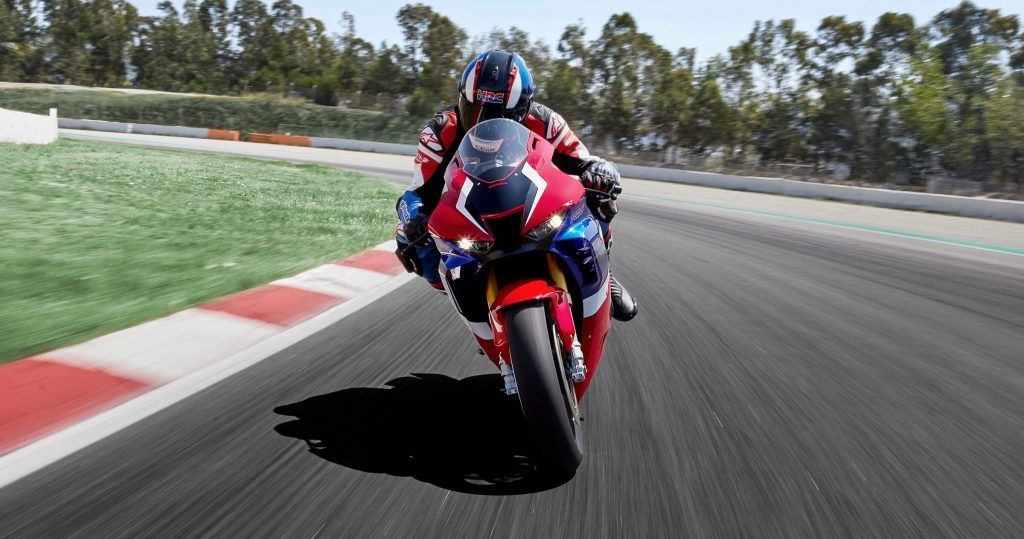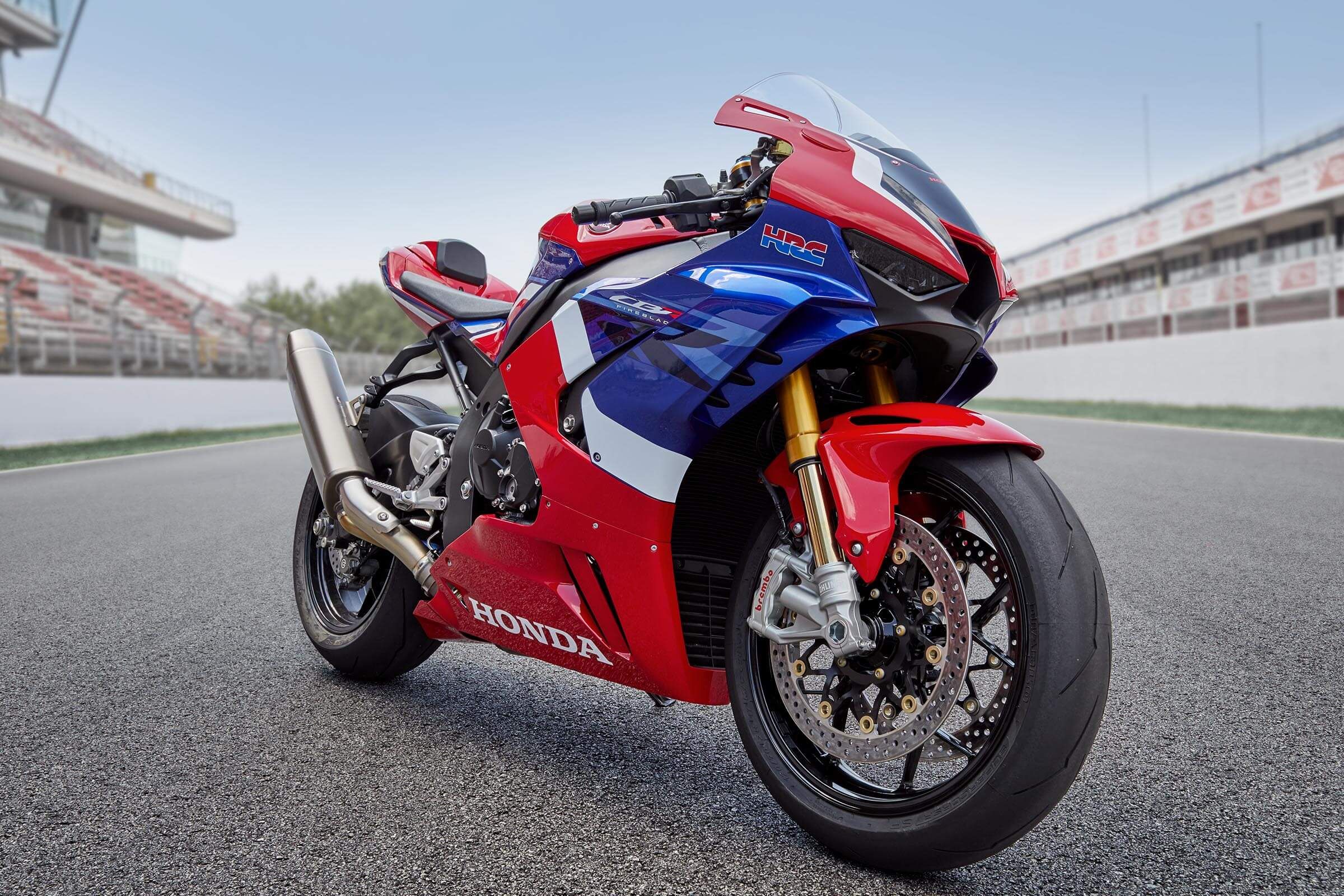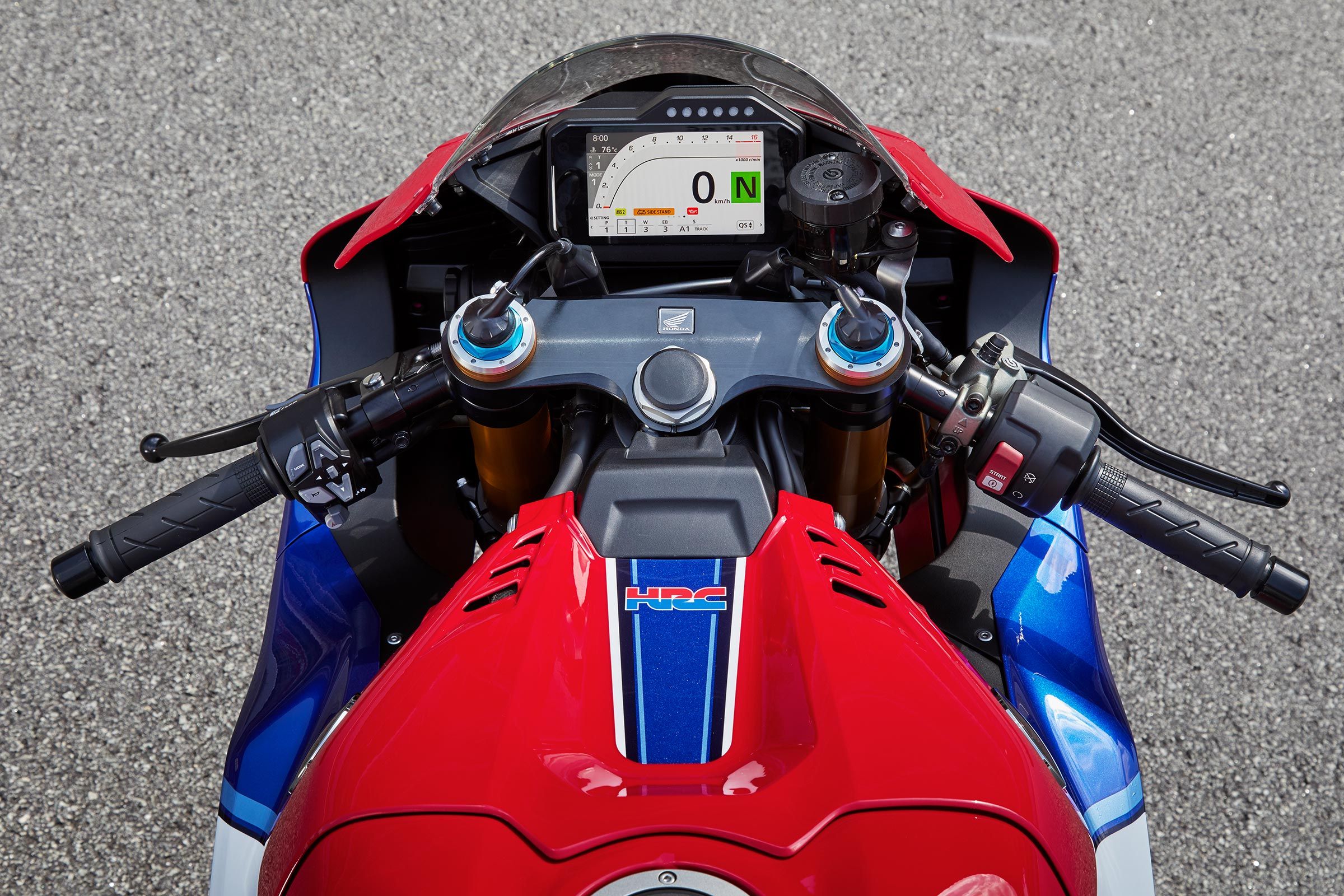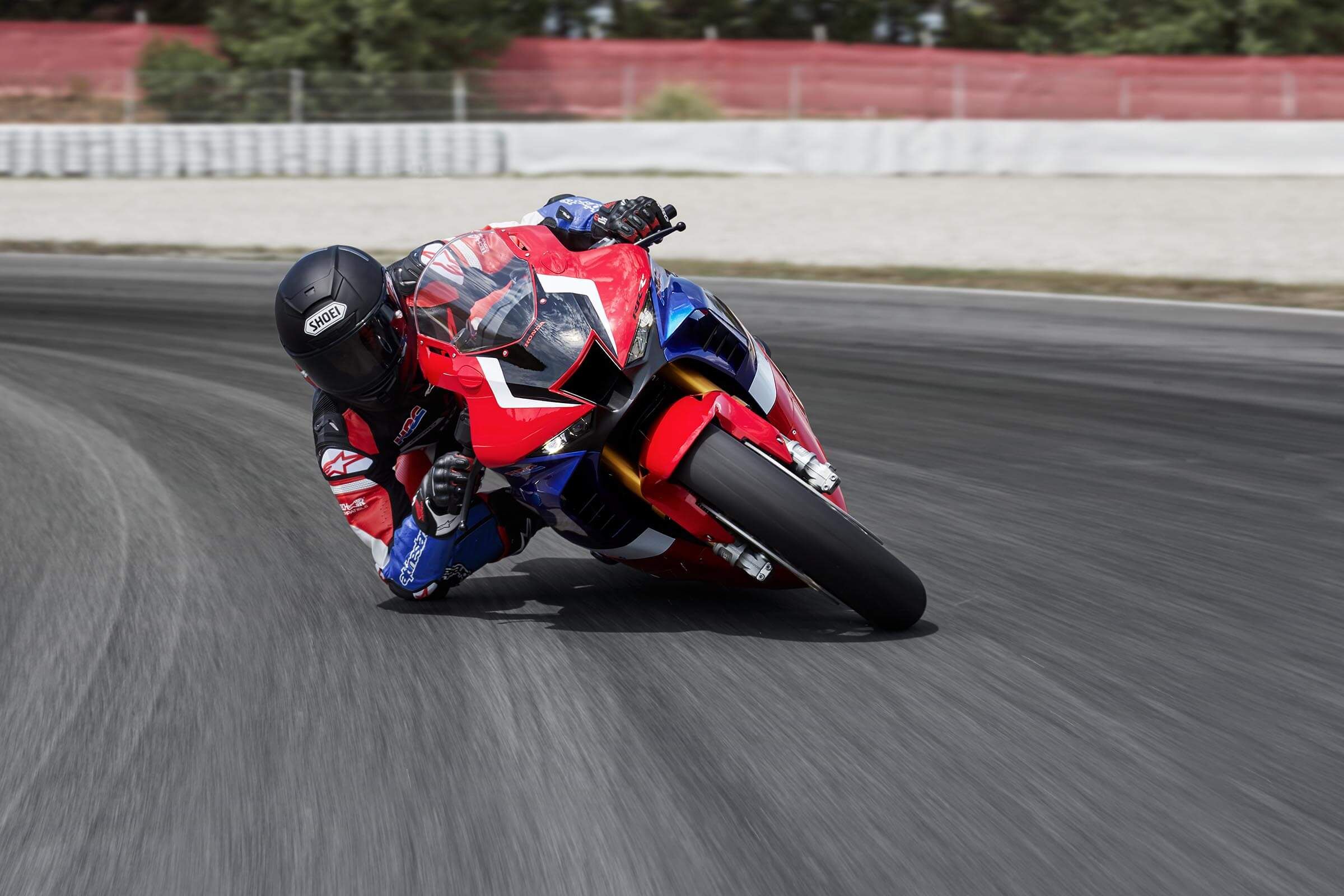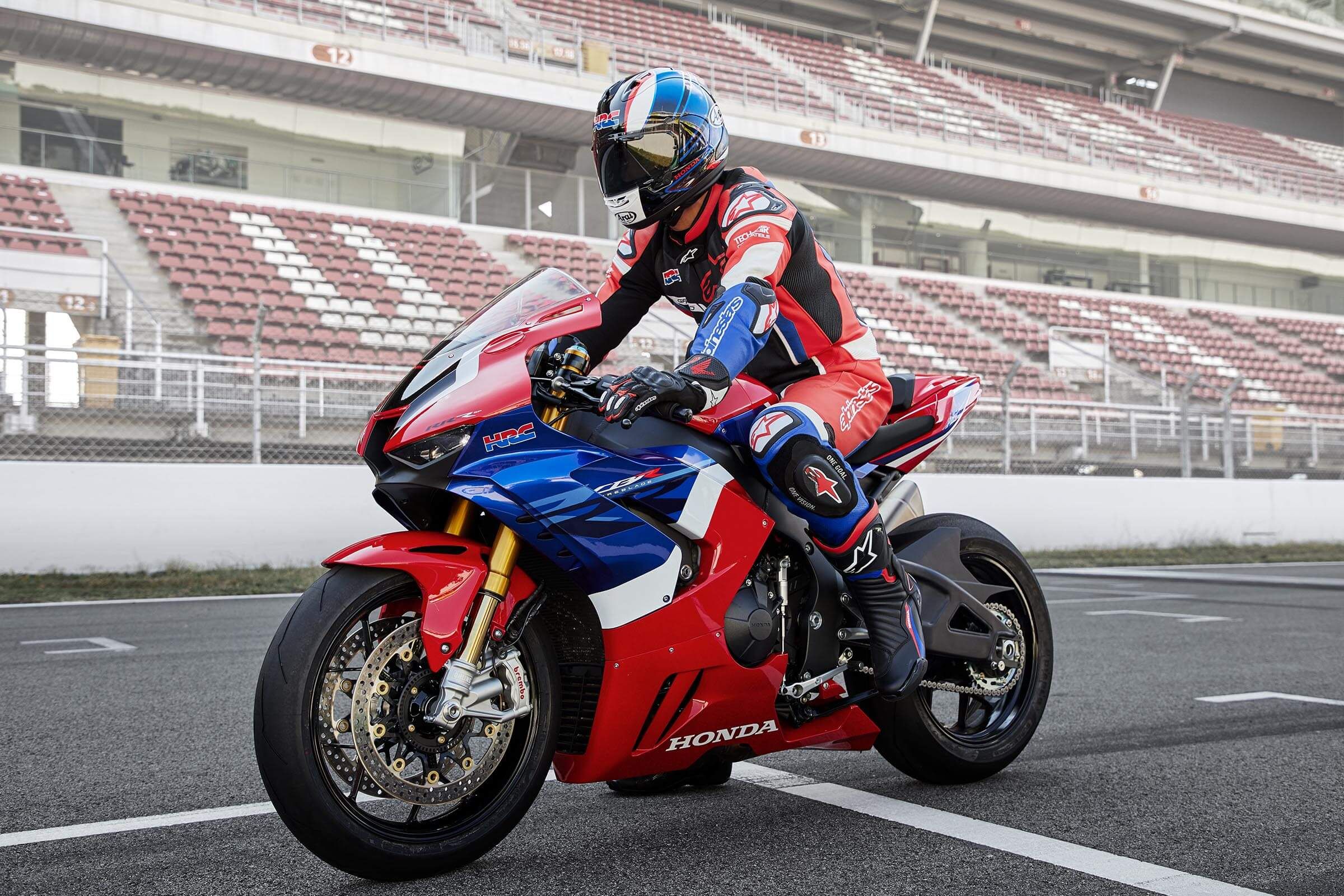Honda Racing Corporation has a rich history in MotoGP and its performance DNA is woven into the newest iteration of the CBR line. Even with its track-tuned characteristics, the bike is street legal and will be available in limited production for consumers in 2021. The Fireblade’s price tag is supported by its all-new design that adds a new engine and refined, track-ready mechanics.
The 999cc inline-four has been improved over the years to provide an exponential increase in power over its 1992 counterpart. Its design, heavily inspired by the RC213V MotoGP bike, provides excellent track agility and reliable performance in a street-legal package. And with Honda’s solid engineering behind the build, riders can achieve track day aspirations with increased confidence. Here, we will discover the novel features of the CBR1000RR-R Fireblade SP and how it justifies its $28,500 price tag.
Top Performer In The CBR Line
The first sportbike in Honda's CBR line was the striking CBR900RR, an 893cc bike released in 1992. CBR evolved significantly over time, with the production of models such as the iconic 2007 Repsol edition. Over time, the models became improved for the track and designed with a more agile stance. The CBR1000RR was first produced by Honda in 2004, geared for competitions such as the Superbike World Championship.
The newest Fireblade SP sports an array of improvements, including a more compact chassis, increased rigidity, and a smaller, more powerful engine. Its design takes inspiration from the RC213V, one of three bikes that have garnered Honda more MotoGP championships than any other manufacturer.
Design And Technology
The athletic suspension setup is comprised of 43mm Öhlins NPX Smart-EC forks in the front and pro-link single shock in the back. Each has 4.3” and 5.6” of travel, respectively. Rear Pro-Link suspension is attached directly to the engine block, substituting a bracket in place of the upper cross-member.
Adjustments to the suspension can be made through the Öhlins Objective Based Tuning interface or OBTi. Shock absorption is augmented by a pressurized damping system that reduces cavitation. Horizontal rigidity for the swingarm was reduced by 15%, further facilitating smooth handling.
The agile chassis rests solidly on 120/70ZR17 tires in the front and 200/55ZR17 in the rear. The low curb weight of 443lbs makes the Fireblade especially maneuverable. Larger Brembo brakes (330mm in the front) and rear brake calipers taken directly from the RC213V-S provide a superior response.
Honda added an improved LCD to monitor performance with key variables such as engine temperature, speed, and fuel status. Ride modes and shift settings are easily modified from the command console, which has a higher resolution than the previous editions.
Performance technology abounds in the new CBR, including electronic suspension control, Showa electronic steering damper, and a six-axis Inertial Measurement Unit (IMU) developed by Bosch. Honda’s Selectable Torque Control (HSTC) and Throttle-By-Wire (TBW) systems step in to assist traction and throttle response.
Power, Performance And Handling
Fireblade SP has a 999cc liquid-cooled inline-four powerplant. It utilizes Honda’s Programmed Dual Stage Fuel Injection (PGM-DSFI). The bore and stroke are upgraded to 81mm x 48.5mm, up to spec with MotoGP bore standards and the RC213V. This is one of the largest bore sizes in the 1000cc bike market, matched by the Ducati Panigale V4. Honda manages cooling through innovative features such as a “built-in bottom bypass” for cool water circulation. A turbulator is added to enhance induction along with a ram air duct and larger air filter.
Materials engineering played a large role in the development of the SP. The forged pistons are made from the same aluminum (A2618) as the RC213V, reducing piston weight by 5% from the previous CBR1000RR. Continuing with the RC213V-derived design, Honda adds lightweight titanium connecting rods. Diamond-Like Carbon (DLC) coatings are used on the camshaft lobes, directly contributing to a 35% reduction in valvetrain friction.
The engine's roar is bolstered by a titanium exhaust created in collaboration with Akrapovic, a component that also contributes to the bike’s mass distribution. Winglets were added to the ducts on either side of the frame to increase downforce. The twin-spar aluminum frame increases vertical rigidity by 9% and torsional rigidity by 18%. With its numerous improvements, the Fireblade SP achieves a class-leading drag coefficient of 0.270.
“The several track-focused changes Honda made when creating this all-new machine has come together in a package that is truly impressive and exhilarating”, said Troy Siahaan in a review on motorcycle.com. The new bike is undoubtedly constructed with a stronger build and track-geared design.
Although some would prefer the styling of a Ducati Panigale V4, the Fireblade SP has been designed to have a striking look. Honda bikes are also less expensive to maintain and fix, and rest on the unequivocal reliability of the brand. And although a comparable Ducati can be obtained for a lower price, Honda’s MotoGP legacy is second to none. The newest Fireblade certainly has well-implemented upgrades that make its price more reasonable than it may seem at first glance.
Sources: Honda, Cycle World, Motorcycle.com, Xtreme Honda

